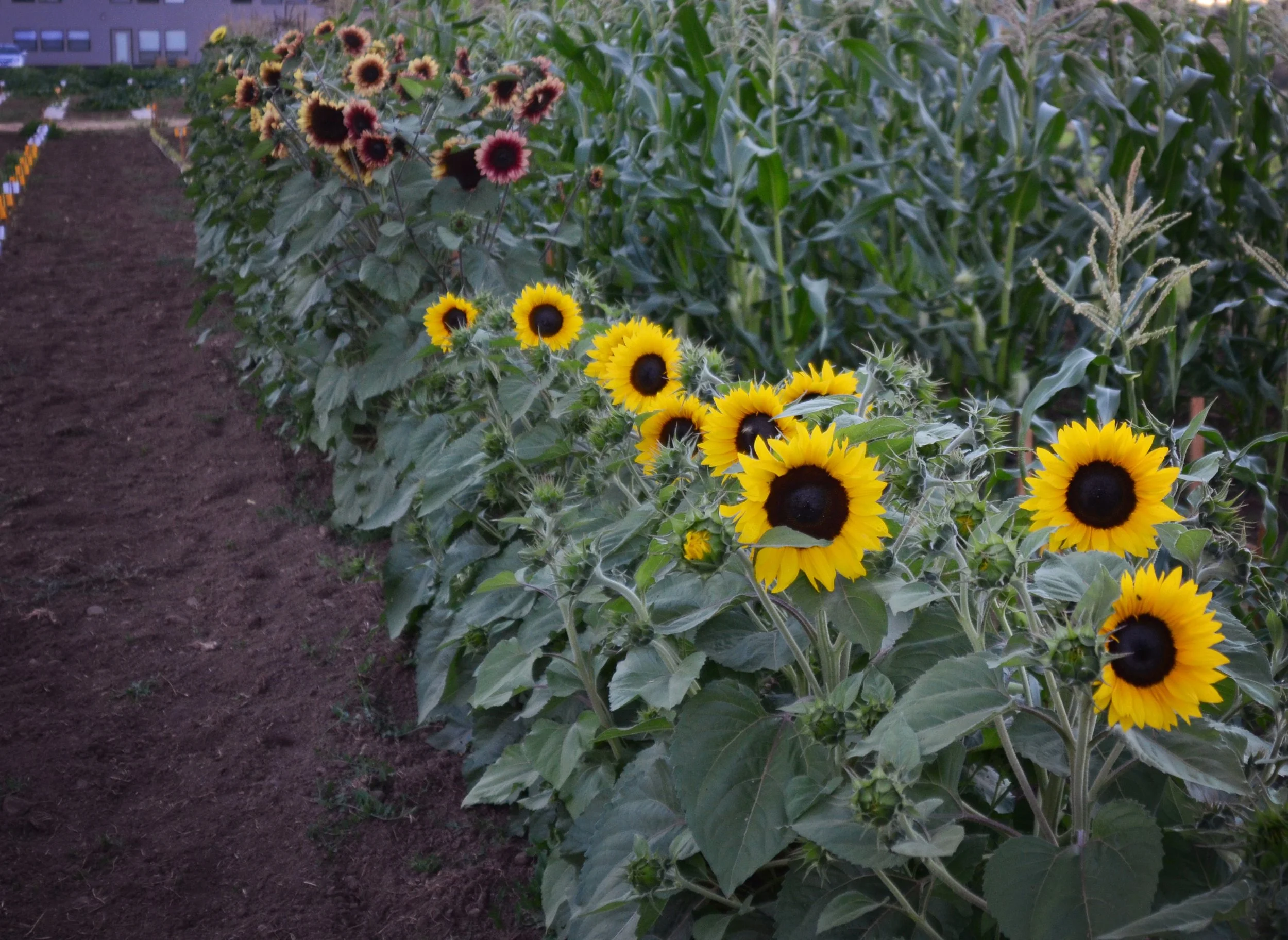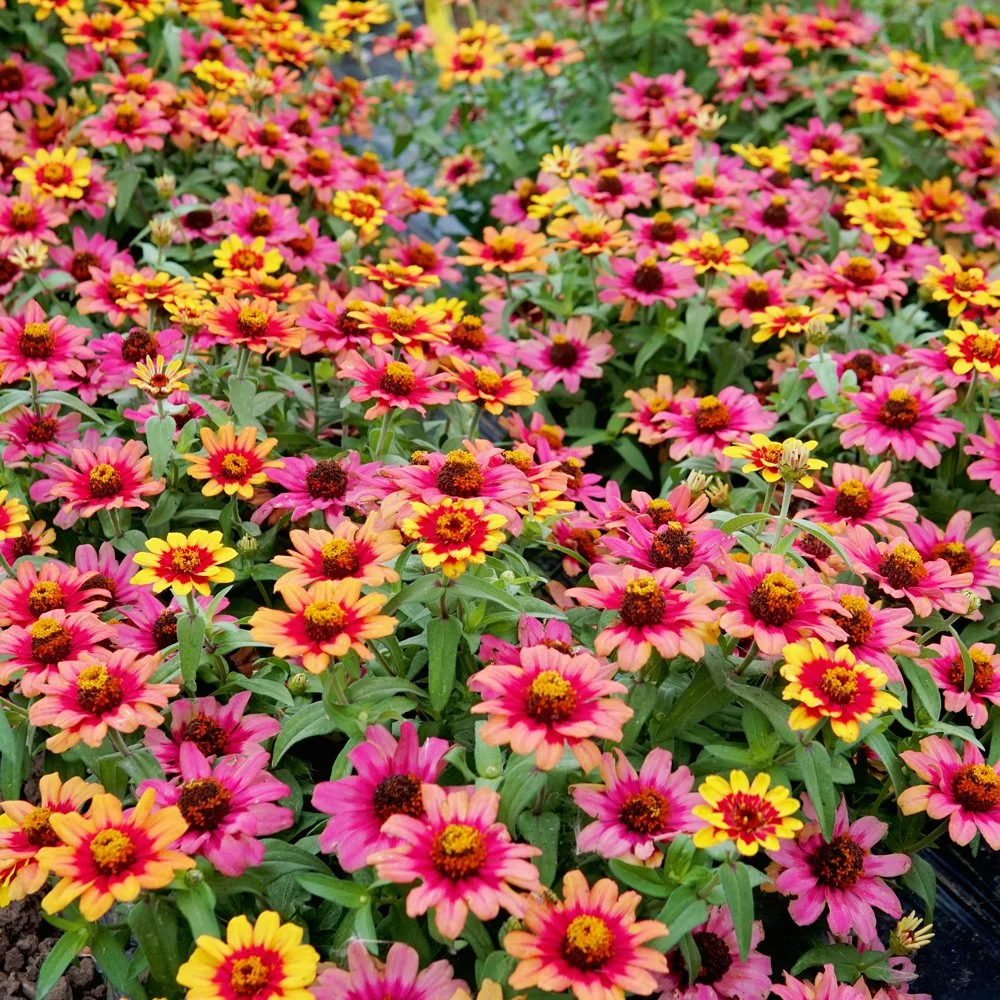Bedding or cutting flowers? Why not enjoy the best of both worlds?
Putting Flowers in Their Place
Flowers: an endless source of enchantment. As a fellow flower lover, where do you love to see blooms? Is it outdoors, brightening your yard or gracing your entryway table with a magnificent arrangement of fresh-cut blossoms? Or both? If you strive to adorn your landscape with flowering plants, then there’s a world of beautiful varieties that will cover the ground, ramble over the edge of containers, and fill your space with flowers. If you are more inclined to enjoy flowers close-up, indoors in fresh arrangements, then you might benefit from some handy tips from the pros on growing exemplary crops of cutting flowers for harvesting.
The Divisions of Flowering Plants
Putting Flowers to Bed
Let’s get back to basics with flowers. Bedding flowers are meant to be beautiful on the plant and in situ. They are suited for filling space and covering the ground. The plants are typically self branching, producing more ground-hugging, mounding plants that are covered with blooms. Bedding plants are bred to be low maintenance with durable, persistent blooms or self-cleaning with repeat blooms. All these qualities make bedding plants ideal for growing in the landscape, planters, hanging baskets and borders. That’s not to say that you can’t use your bedding blooms in fresh arrangements—you most definitely can! Take for instance, this lovely bouquet with a very unlikely component: petunias! It turned out the petunias had a great vase life and fragrance, too!
Using bedding flowers in arrangements can limit the height of the piece, but there’s more to consider when choosing a cutting flower.
Blooms for Harvest
Flowers that are bred specifically for cutting will exhibit very different traits than those of bedding plants. One of the most discernable delineators between bedding and cutting flowers is the crops’ overall height, which translates to flower stem length in this case. For cut flower production, plants that have tall, upright stems are preferred for their versatility in arrangements. Although you can incorporate these plants in a landscape, many times cutting flowers are harvested prior to the blooms revealing their peak show, so if you plan on harvesting all the flowers for arrangements you’ll never have a pretty display on the plants. The preferred option is to dedicate a growing space specifically for cutting. It’s almost always necessary to provide some support to hold the long stems upright and straight (although some crops like sunflowers rarely require it).
The inherently long stems of cutting types benefit from a structure that keep them from flopping over and ending up with distorted stems and dirty flowers. In our fields, we’ll use a simple structure of t-posts with one or more layers of trellis netting suspended horizontally over the beds. The plants grow through the netting grid, which keeps them true. This is a very common support method for fresh-cut flower growers—practical and economical but not necessarily the most eye appealing.
There are two additional factors that don’t apply to bedding blooms but do make a good cutting flower and relate to the flower’s performance after it has been harvested. Vase life and pollen shedding are important qualities to consider for a cut flower. Vase life is simply how long the flower will look good after being cut and put in clean water, the longer the better. Pollen shedding of a cut flower is something to be avoided, as, at the very least, it’s a messy nuisance. Flowers that traditionally carry lots of pollen like sunflowers, for example, have been bred to produce sterile, or pollen-free blooms. These varieties are specifically developed for fresh-cut flowers and eliminate the mess of pollen on the surfaces under the arrangement.
The Best of Both Worlds
Incorporating cutting flowers in your landscape beds and selectively harvesting some blooms means enjoying your longer-stemmed crops alongside of the ground-covering bedding plants plus having occasional bouquets indoors. Since cutting flowers will normally be taller than bedding plants, they can be utilized in the rear of a bed to provide a backdrop for shorter bedding types. Position progressively taller varieties farther back in the planting, and you’ll end up with a gradual swell in height of color and form. For the tall, cutting types, corralling smaller groups of plants to keep them upright can be accomplished with tomato cages, homemade woven willow supports, peony rings, or any number of creative staking methods.
Author’s Choice Cuttable Flower Garden
This year, my personal flower garden will be a mix of colors and textures for a vivid display in the yard plus lots of options for selected fresh harvests. My mix will be mostly direct-seeded, and interspersed with perennials and ornamental grasses. From the back of the planting, I’ll create a wall of sunflowers for a backdrop and allow some Love-in-a-Puff Cardiospermum to climb the sunflower stems. Working forward, Foxglove, Cosmos, Zinnia, Rudbeckia, Nigella and finally a bedding Zinnia and Nasturtium up front.
Here are the varieties I’ve chosen (along with their heights):
Let us know your flower planting plans in the comments! Happy gardening!
Author: Kat B.







